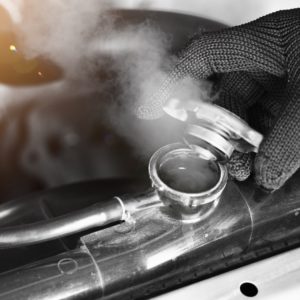Your car’s radiator acts as a heat transfer device, releasing heat from the hot engine coolant into the atmosphere. Without the radiator, there would be no means of removing heat from the cooling system, and the engine would quickly overheat.
As important as the radiator is, you might not know where it’s located, especially if you’re new to automotive repair. That’s why we’re here to help you find your car’s radiator and learn more about it along the way.
Where is the Radiator Typically Located?
The radiator is typically located at the front of the engine compartment behind the vehicle’s grille, where cool air can pass through the radiator, removing heat from the coolant inside.
Parts of a Radiator

A typical radiator has an inlet tank, an outlet tank, and a center core comprised of tubes encased in fins. Coolant first enters the radiator from the engine through the inlet tank. The coolant then travels through the tubes, which transfer heat from the coolant to the fins, and the fins transfer the heat to the outside air. Finally, the coolant exits the radiator through the outlet tank, and the cycle begins again.
Most vehicles with an automatic transmission also have a transmission cooler located inside the radiator’s outlet tank. Transmission fluid is circulated from the transmission to the cooler to remove heat.
Radiator Location Diagram
Are you ready to locate your car’s radiator? You’ll typically find the radiator at the front of the engine compartment, behind the grille.

Tips When Trying to Access the Radiator
Some radiators are easier to access than others. The complexity of the task primarily hinges on how tight the engine compartment is and how many components you need to remove to access the radiator.
One thing to keep in mind, however, is that you must bleed the cooling system of air after replacing the radiator. Failing to do so can lead to overheating and possible internal engine damage.
Consult a repair manual or repair database for the bleeding procedure for your vehicle, or use a vacuum fill tool to bleed the system of air.
You can also watch this tutorial video on how to replace your radiator:
Any information provided on this Website is for informational purposes only and is not intended to replace consultation with a professional mechanic. The accuracy and timeliness of the information may change from the time of publication.




























